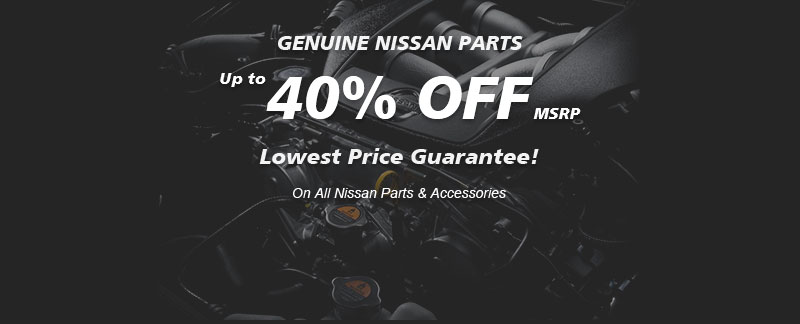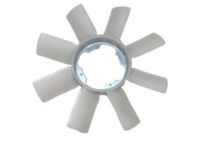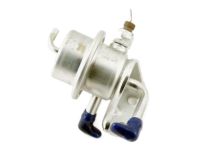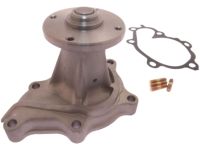Why choose NissanPartsDeal
- Quality Parts
To keep your car running at peak performance, you need Nissan 300ZX genuine parts from NissanPartsDeal.com. For years, we've been the leading online Nissan 300ZX parts store. At NissanPartsDeal.com all the parts in our catalog are inspected and tested by our team of experts to ensure optimal fit and performance.
- Unbeatable Prices
What makes NissanPartsDeal.com the best choice for Nissan 300ZX OEM parts? You get giant savings because our goal is to offer unbeatable prices. OEM parts are perfect for drivers who want the best products available but don't have the funds to splurge on expensive parts. Plus, Our products offer the same performance and reliability as their OEM counterparts at a fraction of their price.
- Fast Shipping
All the OEM Nissan 300ZX parts you need for routine maintenance and repair can be found in our complete Nissan 300ZX parts catalog. Having the best inventory available, your parts for Nissan 300ZX will arrive fast anywhere in the nation. Plus, all Nissan 300ZX auto parts purchases are risk-free as everything is expedited directly from dedicated authorized dealers and backed by the manufacturer's warranty, so you'll be back on the open road before you know it.
Popular Genuine Nissan 300ZX Parts
- Body Electrical Parts View More >
- Engine Mechanical Parts View More >
- Axle & Suspension Parts View More >
- Engine Electrical Parts View More >
- Miscellaneous Parts View More >
- Body (Side & Rear) Parts View More >
- Body (Front, Roof & Floor) Parts View More >
- Fuel & Engine Control Parts View More >
- Power Train Parts View More >
- Exhaust & Cooling Parts View More >
- Steering Parts View More >
- Brake Parts View More >
Shop Genuine Nissan 300ZX Parts with NissanPartsDeal.com
The Nissan 300ZX, produced over two generations, is a sports car symbolizing luxury and comfort. The first generation, manufactured from 1983 to 1989, became Nissan's best-selling Z car, while the second generation brought a redesign, speedier performance, and advanced technology to stay competitive. The Fairlady Z, as it was called in Japan, was designed by Kazumasu Takagi and his team, presenting a more aerodynamic structure and Japan's first V6 engine. The model featured electronic fuel injection and rear-wheel drive, and its VG30 engine, available in two versions, VG30E and VG30ET, provided an increased cooling system and automatic adjustable hydraulic valve timing. Paired with either a 5-speed manual or a 4-speed automatic gearbox, the car offered enhanced handling and acceleration due to its wheelbase and MacPherson independent suspension. The turbo models boasted an electronically adjustable triple shock absorber system. Later enhancements in 1987 included more aerodynamic bumpers, fog lights on the front spoiler, and a DOHC engine addition to the range. The exterior showcased a broader, rounded profile with redesigned taillights and a triple LED brake light for a modern appeal. The Nissan 300ZX stands out as a pivotal member of the Z car lineage, known for its performance, technology, and design advancements.
The Nissan 300ZX, a performance-centric sports car, is not immune to wear and tear over time. The most common issue is reduced engine performance, marked by squealing noises, overheating, oil leakage, slow acceleration, poor fuel economy, black smoke, and starting issues. These signs often precede rough engine operation, and when the Check Engine Light activates, it's crucial to inspect components like the drive belt, radiator hose, cooling hose, spark plug, coolant temperature sensor, exhaust manifold or flange gasket, camshaft seal, and rod bearing. Suspension failure is another prevalent problem, often identified by grinding or roaring noises from the tire area, abnormal tire wear, a bottoming-out vehicle, and excessive steering wheel vibration. These symptoms necessitate thorough checks of the wheel bearing, coil spring insulator, control arm bushing, and sway bar bushing. Routine maintenance plays a vital role in extending your 300ZX's lifespan, and it's essential to understand which parts require regular upkeep. Auto parts impacting driving safety, like the headlight bulb, fog light, and wiper blade, ensure better visibility and should be well-maintained. Simultaneously, certain electrical and door parts like the power window switch, door handle, headlight switch, and wiper switch are susceptible to wear and require regular attention to prolong the car's overall life expectancy.
You have nothing to worry about if you choose OEM parts as they are the best you can get in terms of quality and longevity. This is because they are precisely-engineered with the meticulous specifications of the official factory. They have passed strict quality control tests during manufacturing, so you know they're durable and sure to fit. Looking for top-quality but affordable OEM Nissan 300ZX parts, including Seat & Seat Belt, Body (Back Door & Rear Body)? Consider browsing the extensive inventory of genuine Nissan 300ZX parts at NissanPartsDeal.com. Our parts are priced the most affordably online and come with the assurance of a manufacturer's warranty. Plus, our hassle-free return policy and speedy delivery service make your shopping experience a breeze. Why wait? Start shopping today!
Nissan 300ZX Parts Questions & Answers
- Q: How to remove and install an electric fan in a Nissan 300ZX?A: First of all, disconnect the negative battery cable and move it away. Then, take off the front bumper fascia. Next, disconnect the radiator fan's electrical connector. Remove the four nuts holding the radiator fan to the bars and lift off the fan and shroud by removing the four bolts. Reverse these steps for installation.
- Q: How do you remove and install a fuel pressure regulator?A: First of all, relieve fuel pressure and disconnect the battery's negative cable. Remove the two fuel lines, the vacuum line, and the fuel temperature sensor connector. Disconnect the return fuel line and remove the regulator by taking out the two bolts. To install, reverse these steps.
- Q: How to remove and install a water pump in a Nissan 300ZX?A: Disconnect the negative cable at the battery and place the cable out of the way so it cannot accidentally come in contact with the negative terminal of the battery. Jack up the vehicle and support it securely on jackstands. Drain the cooling system, including both cylinder block petcocks. Remove the fan and shroud, the drivebelts, the water pump pulley, and the vibration damper from the crankshaft. Remove the upper and lower timing belt covers. Remove the six water pump retaining bolts and the water pump from the engine block, and scrape all gasket and sealant material from the mounting surfaces. Upon installation, apply gasket sealant to both sides of the new gasket and install it and the water pump to the engine block. Tighten all the water pump bolts, a little at a time, to specification. After running the engine for a short time, check carefully for leaks around the water pump.




















































